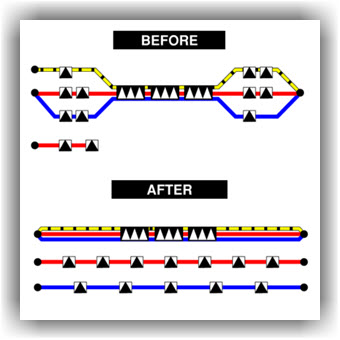The Kindersley Hospital and surrounding residential neighborhood were powered by one of the oldest underground residential distribution (URD) systems in SaskPower’s network. Despite being originally installed in the 1950s, the system was still functioning. However, it posed risks to reliability, maintainability, and safety — particularly for critical infrastructure like the hospital. Key issues included:
- Hospital 3-phase supply was interlaced with residential 1-phase URD loops, increasing the risk of tripping the hospital offline.
- Five live-front transformers required complex Standard Operating Procedures (SOPs) and lacked 4-way load-break switching for restoring power quicker during outages.
- Paper-Insulated Lead Cable (PILC), was time-consuming to repair, and staff training was rare because it was a legacy asset.
- Radial-fed transformers, meaning a single cable fault would leave customers offline with no alternate supply path
Pursuing a quick like-for-like replacement would have minimized design effort on a project with a tight schedule. However, our goal was to still keep the schedule, but also deliver a safer, more maintainable, and future-ready distribution system.
SaskPower Strategic Direction
- Deliver improved value for our customers and stakeholders
- Develop the workforce to meet our future needs
- Ensure our financial health
- Build a reliable, secure and affordable electricity system for the future
Project Highlights:
- Reconfigured the existing three 3-phase hospital transformers onto a dedicated loop, decoupled from the residential URD network
- Reconfigured 12 existing residential padmount transformers, serving approximately 150 customers, onto dedicated URD loops for better fault isolation and operational simplicity
- Coordinated with two overlapping projects to reduce crew mobilization costs and avoid rework caused by disconnected planning
- Engaged a second project sponsor to secure additional funding, covering the cost gap between basic asset replacement and a reliability-focused solution
- Led early on-site engagement with field operations staff to ensure the design was constructable, operable and maintainable from their perspective
- Secured additional registered easements to ensure relationships with future landowners are respected
- As part of a broader initiative to mentor and upskill junior distribution designers, this project was captured in a 7-minute training video that breaks down key design decisions and includes onsite footage from the cutover day. The result was both a modernized URD system and a lasting resource to support the next generation of designers.

